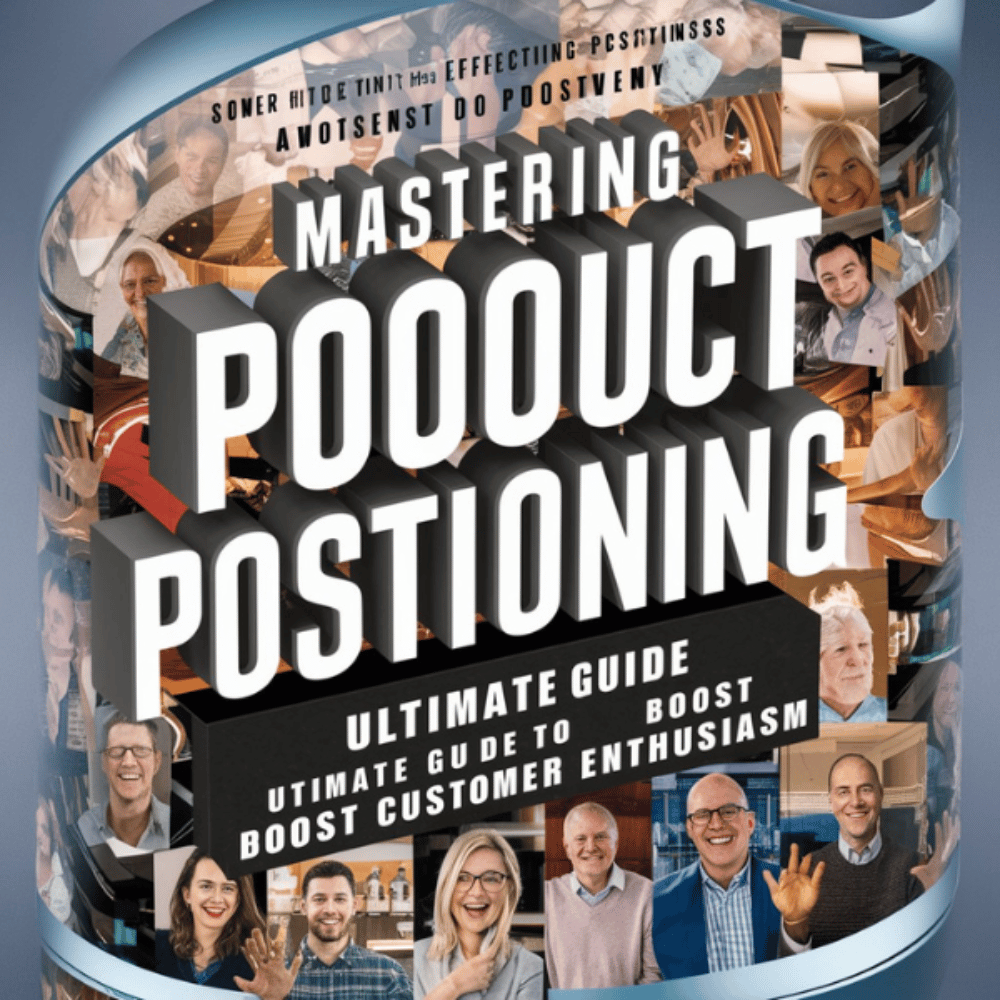Introduction: Why Product Positioning Matters
Imagine this: you’ve put your heart and soul into creating a product. It’s innovative, solves real problems, and offers great value. But for some reason, it’s not flying off the shelves. Sound familiar? The missing piece could be product positioning. The way you position your product can either spark enthusiasm or leave your audience indifferent. This guide is here to help you master the art of product positioning so that your offerings resonate deeply with your audience and compel them to act.
Understanding Product Positioning
What Is Product Positioning?
At its core, product positioning is about defining how your product fits into the market and into the lives of your customers. It’s the process of crafting a unique identity and ensuring it stands out in the crowded marketplace. When done right, it bridges the gap between what your product offers and what your customers need.
Why Is It Important?
When your positioning is clear, customers instantly understand why they should choose you over competitors. It helps build trust, loyalty, and enthusiasm—key ingredients for long-term success.
Key Components of Effective Product Positioning
1. Target Audience Analysis
To position your product effectively, you need to know who you’re talking to. What are their pain points, desires, and values? Use tools like Google Analytics and customer surveys to gather data and build a detailed profile of your ideal customer.
2. Unique Value Proposition (UVP)
Your UVP is the heart of your positioning strategy. It’s the clear, concise statement that communicates the unique benefit your product provides. Think about what makes your product stand out. Is it faster, more reliable, or more affordable? Highlight this in your messaging.
3. Market Differentiation
Understanding your competition is crucial. Conduct a SWOT analysis to identify strengths, weaknesses, opportunities, and threats. Look for gaps in the market that your product can fill, and use these insights to differentiate yourself.
Strategies to Master Product Positioning
Crafting a Compelling Brand Story
People don’t just buy products; they buy stories. Your brand story should evoke emotion and connect on a personal level. Start by identifying the hero (your customer), the challenge they face, and how your product is the solution.
Elements of a Great Story
- Relatable Characters: Make the customer the center of the narrative.
- Conflict: Highlight their problem or need.
- Resolution: Position your product as the answer.
Example
Think about Nike’s storytelling. Their campaigns focus on empowerment, inspiring customers to “just do it.” This emotional appeal builds a strong connection with their audience.
Aligning Positioning with Customer Needs
To create excitement around your product, you must address the specific needs of your audience. Conduct surveys, monitor social media conversations, and test prototypes to gather insights. Then, tailor your messaging to directly address their pain points and aspirations.
Effective Use of Visual and Verbal Branding
Visual Branding
Your visuals—logos, colors, and packaging—should communicate your brand’s essence at a glance. Consistency is key. Use tools like Canva or Adobe Creative Suite to create professional, cohesive designs.
Verbal Branding
Words matter. From your tagline to product descriptions, every word should reflect your brand’s personality. A memorable tagline, like Apple’s “Think Different,” can leave a lasting impression.
Optimizing Product Positioning for Online Businesses
Leveraging SEO to Amplify Reach
In the digital age, visibility is everything. Optimize your product pages with keywords your audience is searching for. Create high-value content that answers their questions and solves their problems. Use tools like SEMrush or Ahrefs to identify opportunities.
Personalization Strategies to Boost Customer Enthusiasm
Customers love experiences tailored to their preferences. Use dynamic content to offer personalized recommendations, just like Amazon does. When customers feel seen and understood, their enthusiasm for your brand grows.
Utilizing Social Proof
Social proof is a powerful motivator. Display customer testimonials, reviews, and user-generated content prominently. Positive feedback from real customers builds trust and encourages others to buy.
Strategies for Gathering Reviews
- Send post-purchase surveys.
- Offer incentives for leaving honest reviews.
- Engage with customers on social media to encourage them to share their experiences.
Common Mistakes to Avoid in Product Positioning
Overpromising and Underdelivering
It’s tempting to make bold claims to attract attention, but failing to meet expectations can damage your reputation. Be honest about what your product can deliver, and aim to exceed those expectations.
Ignoring Competitor Analysis
You can’t position your product effectively without understanding the competition. Regularly review what your competitors are offering and find ways to differentiate yourself.
FAQ Section
What is product positioning?
Product positioning refers to how a product is perceived in the minds of customers compared to competitors. It involves crafting a unique identity and aligning it with customer needs.
Why is product positioning important for online businesses?
Effective product positioning boosts customer enthusiasm, increases brand loyalty, and helps businesses stand out in competitive markets.
How can I create a strong unique value proposition (UVP)?
To create a strong UVP, identify what makes your product unique, focus on customer pain points, and clearly communicate the benefits your product offers.
How can I differentiate my product from competitors?
Analyze competitors to identify gaps in the market. Focus on your product’s unique features, benefits, and value to customers.
Conclusion: Turning Strategy into Action
Now that you understand the principles of product positioning, it’s time to put them into practice. Start by getting to know your audience inside and out. Use that knowledge to craft a compelling brand story, align your messaging with their needs, and differentiate yourself from competitors. Remember, effective positioning is an ongoing process, so keep testing and refining your approach. By mastering these strategies, you’ll not only boost customer enthusiasm but also set your product up for lasting success. Don’t wait—start today and watch your brand thrive.





